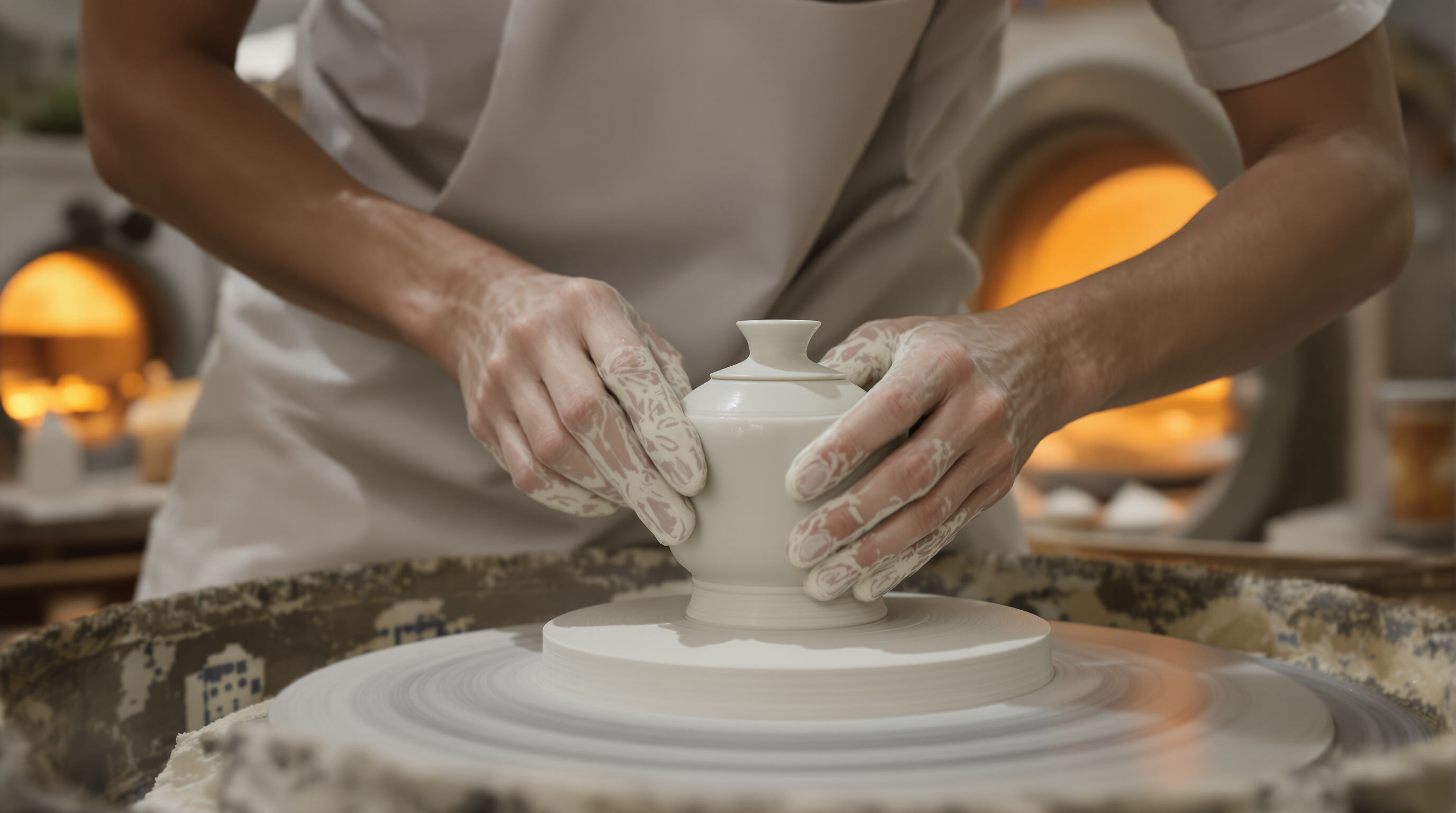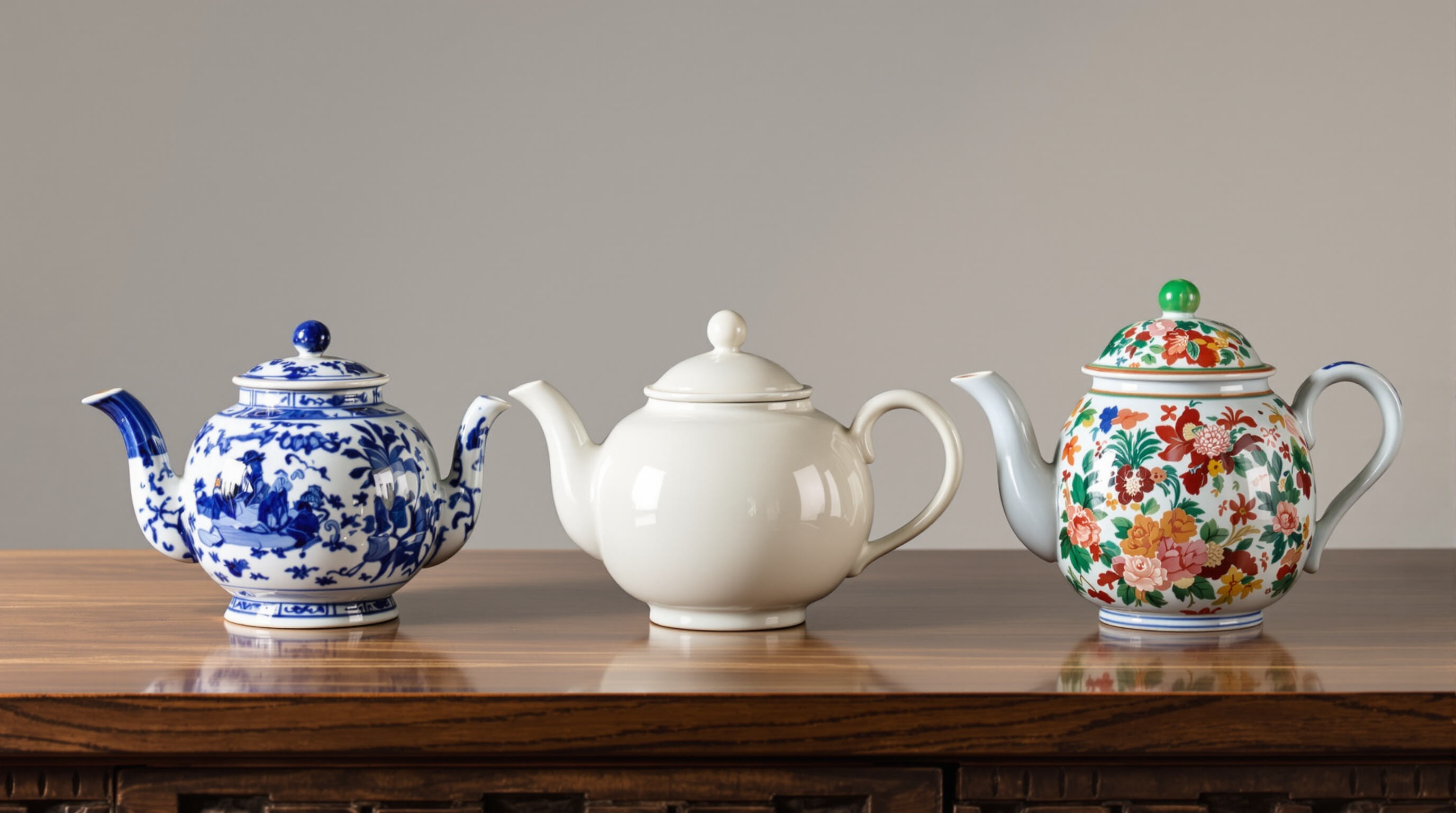Proč jsou čínské porcelánové konvice velmi ceněny
Společnost Shenzhen Tao Hui Industrial Co., Ltd. dlouhodobě působí v oblasti výroby a distribuce vysoce kvalitní čínské čajové nádobí, která spojuje staletí tradice s dnešním způsobem života. Mezi širokou škálou dostupných konvic jsou čínské porcelánové konvice zvláště ceněny pro svou eleganci, trvanlivost a kulturní význam. V tomto článku se podíváme, proč jsou tyto konvice velmi ceněny, blíže se seznámíme s jejich historií, řemeslnou výrobou, praktickými výhodami a trvalým původem pro čajové nadšence po celém světě.
Bohatá historie zakořeněná v čínské kultuře
Dějiny čínských porcelánových konvic pocházejí z doby dynastie Ming (1368–1644), období, které je často oslavováno pro rozkvět umění a kultury čaje. V této době se porcelán stal široce uznávaným materiálem pro výrobu čajových nádob. Na rozdíl od běžné hlíny byl porcelán ceněn pro svou jemnou strukturu, průsvitnost a odolnost vůči vysokým teplotám.
Porcelánové konvice brzy představovaly vkus a společenský prestiž. Učenci, literáti a bohaté rodiny je vystavovali během čajových ceremonií a oceňovali nejen jejich praktickou funkci, ale také jejich uměleckou krásu. Složité návrhy často zahrnovaly tradiční čínské symboly – draky představující moc, lotosové květy pro čistotu a krajinářské motivy symbolizující harmonii s přírodou. Tyto rané konvice byly více než praktické nástroje; byly to cenné kulturní artefakty odrážející vkus, vzdělání a společenské postavení majitele.
Po staletí se tradice porcelánových konvic vyvíjela společně s rozvojem čínské kultury čaje. Dnes zůstávají svědkem spojení umělecké kreativity, odborné řemeslné dovednosti a kulturního dědictví a oslovují čajové nadšence po celém světě.
Výjimečné řemeslo: Od hlíny k mistrovskému dílu
Jedním z hlavních důvodů, proč jsou čínské porcelánové konvice velmi ceněny, je výjimečné řemeslo, které stojí za každým kusem. Proces začíná výběrem vysoce kvalitní hlíny kaolin, která je známá svou čistotou a jemností. Řemeslníci poté pečlivě tvarují konvici, často s využitím přesných forem, přičemž si přesto zachovávají detaily dokončené ručně. Každý oblouk, ucho a výlevka jsou navrženy tak, aby zajistily vyvážené a pohodlné nalévání.
Po vytvarování je konvice pálená při extrémně vysokých teplotách, někdy přesahujících 1 200 °C, aby dosáhla typické tvrdosti a průsvitnosti. Pálení za vysoké teploty také zpevní konvici, čímž získá odolnost proti odštěpení a tepelnému šoku. Poté řemeslníci často přidávají kresby malované ručně, které mohou zahrnovat detailní květinové vzory, tradiční motivy nebo dokonce kaligrafii. Tato kombinace technické přesnosti a uměleckého výrazu zajišťuje, že každá konvice je funkční i vizuálně působivá.
Návrh porcelánové konvice není náhodný; odráží staletí nahromaděných znalostí o tom, jak čaj interaguje s různými materiály. Důkladně zpracovaný výlev zajistí hladké lítí, těsnící víko udržuje správnou teplotu louhování a celkový tvar zachovává aroma a chuť čajových listů. Harmonie mezi uměleckým návrhem a praktickou funkcí je tím, co definuje čínské porcelánové konvice.

Vynikající funkčnost a čajová zkušenost
Čínské porcelánové konvice nejsou výjimečné jen z hlediska estetiky, ale i funkčnosti. Porcelán efektivně udržuje teplo, což umožňuje listům čaje rovnoměrně louhovat a plně rozvíjet svou chuť. Na rozdíl od kovových konvic neovlivňuje porcelán chuť čaje a zachovává jeho přirozenou aroma a vůni. Díky tomu jsou porcelánové konvice ideální pro širokou škálu čajů – od jemných zelených čajů až po plně tělnaté černé čaje a vonná oolongy.
Také zkušenost s naléváním je jemně vyladěná. Důkladně navržená konvice zajistí hladký tok čaje bez kapek a stříkání, což umožňuje čisté a elegantní podávání. Mnoho čajových odborníků věří, že volba konvice přímo ovlivňuje kvalitu čajového zážitku, a proto preferují porcelán jak pro příležitostné milovníky čaje, tak pro profesionální čajové mistry.
Zvážení zdravotních a bezpečnostních aspektů
Kromě chuti a funkčnosti jsou zdravotní a bezpečnostní aspekty klíčovými důvody, proč jsou porcelánové konvice velmi ceněny. Vysoce kvalitní porcelán je netoxický a neobsahuje škodlivé chemikálie, jako je olovo nebo kadmium, které se někdy vyskytují v keramice nízké kvality. Porcelán je také odolný vůči vstřebávání skvrn a zápachů, což pomáhá tomu, aby každé vaření chutnalo čistě a nezkresleně.
Tato kombinace odolnosti a bezpečnosti činí porcelánové konvice vynikající investicí pro domácnosti, čajovny a kavárny. Výběr čínské porcelánové konvice představuje více než pouhou eleganci – je to závazek užívat si čaj ve své nejčistší a nejbezpečnější formě.
Sběratelská hodnota a kulturní význam
Čínské porcelánové konvice nejsou jen funkčními předměty – jedná se o sběratelská umělecká díla. Starožitné konvice, zejména ty pocházející z uznávaných pecí, jako je Jingdezhen, často dosahují vysokých cen na aukcích i mezi sběrateli. Sběratelé si cení tato díla pro jejich stáří, mistrnou řemeslnou výrobu, podpisy umělců a charakteristické designy. Některé moderní konvice v omezeném vydání se také stávají žádanými sběratelskými předměty díky své umělecké inovativnosti a kvalitě.
Vlastnictví čínské porcelánové konvice je často považováno za držení hmatatelného kusu čínských dějin. Kulturní symbolika, pečlivé řemeslné zpracování a estetická krása společně vytvářejí předmět, který je zároveň praktický a historicky významný. Mnoho milovníků čaje považuje své konvice za rodinné památky, které se předávají z generace na generaci, čímž vyjadřují hluboký respekt k tradici a dědictví.
Moderní inovace v porcelánových konvicích
Zatímco tradiční metody si stále zachovávají vysokou úctu, moderní čínské porcelánové konvice na čaj přijaly inovativní přístupy. Pokročilé techniky glazování vytvářejí bohatší barvy a odolnější povrchy, zatímco ergonomické návrhy zvyšují pohodlí a použitelnost. Současné konvice mohou také zahrnovat minimalistický estetický vzhled, který oslovuje moderní vkus, čímž jsou vhodné jak pro tradiční čajové obřady, tak pro dnešní interiérovou výbavu.
Shenzhen Tao Hui Industrial Co., Ltd. spojuje staletí staré řemeslné znalosti s moderními výrobními technikami, aby vytvářela konvice, které jsou zároveň kulturně autentické a praktické pro každodenní použití. Výsledkem je konvice, která ctí tradice a zároveň naplňuje potřeby dnešních globálních zákazníků.
Jak vybrat správnou čínskou porcelánovou konvici na čaj
Při výběru čínské porcelánové konvice na čaj je třeba zvážit několik klíčových faktorů:
- Velikost a objem: Menší konvice jsou ideální pro individuální použití, zatímco větší jsou vhodné pro obsluhu více hostů.
- Design a estetika: Zvažte jak vizuální atraktivitu, tak kulturní význam výzdoby konvice.
- Výroba: Zkontrolujte přesazení víka, vyváženost rukověti a hladkost nosu. Kvalitní konvice by měla být pohodlná a odolná.
- Kvalita glazury: Hladká, rovnoměrná glazura svědčí o pečlivosti zpracování a přispívá k dlouhé trvanlivosti.
- Funkčnost: Ujistěte se, že konvice dobře udržuje teplo a lítí hladce, protože tyto faktory přímo ovlivňují zážitek z čaje.
Zvážením těchto faktorů můžete vybrat konvici, která obohatí vaše čajové rituály a zároveň bude krásným a cenným sběratelským předmětem.
Závěr
Čínské porcelánové konvice nadále vysokou hodnotu pro jejich kombinaci historie, kreativního návrhu, praktičnosti a kulturního významu. Od pečlivého výběru hlíny a odborné řemeslné výroby až po elegantní designy a bezchybný výkon při vaření čaje tyto konvice odrážejí staletí čínské tradice. Nabízejí více než nádobu pro čaj - představují spojení s bohatým kulturním dědictvím, oddanost kvalitě a závazek estetické kráse.
Ve společnosti Shenzhen Tao Hui Industrial Co., Ltd. jsme hrdí na zachování a pokračování tradice čínských porcelánových konvic. Ať už jste příležitostný čajový pitín, oddaný znalec, nebo sběratel hledající bezčasý umělecký kousek, čínská porcelánová konvice poskytuje výjimečnou zkušenost - která spojuje eleganci, praktičnost a kulturní bohatství v každé šálku.


